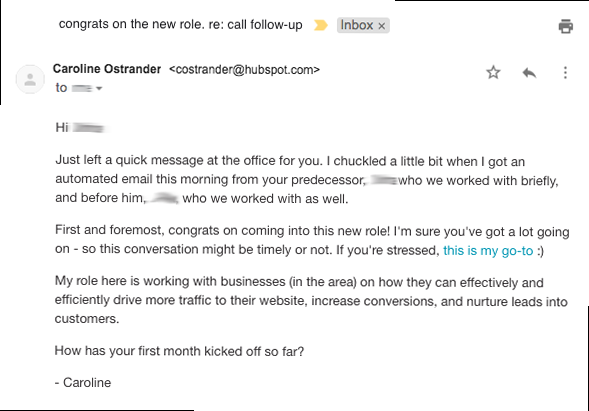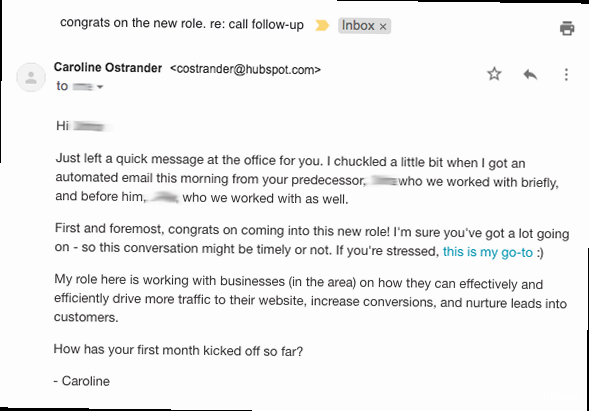How to Write a Cold Email That Actually Gets a Response
Crafting a successful cold email is an art. It’s about more than just sending a message; it’s about building a connection with someone who doesn’t know you exist, capturing their attention in a crowded inbox, and persuading them to take action. This article will guide you through the essential elements of writing a cold email that breaks through the noise and generates positive results, focusing specifically on crafting compelling opening lines and subject lines.
Crafting Compelling Subject Lines: The Gateway to Engagement

- Example 1 (Personalized): “Saw your recent post on [Topic] – Question for you” – This shows you’re aware of their work and have a specific question, implying relevance.
- Example 2 (Personalized): “[Company Name] + [Your Company] – Streamlining [Specific Problem]” – This directly addresses their company and hints at a solution to a problem they might be facing.
- Example 3 (Intriguing): “Quick question about [Industry Trend] at [Company Name]” – This hints at expertise and implies you have valuable insights to share.
- Example 4 (Intriguing): “Is [Pain Point] costing you X amount per month?” – This directly addresses a potential problem and quantifies the potential impact.
- Example 5 (Concise): “[Mutual Connection] suggested I reach out” – Leveraging a mutual connection instantly builds trust and relevance.
- Example 6 (Concise): “Increase [Metric] by X% with [Your Solution]” – This provides a clear and concise value proposition.
# Conceptual script snippet for tracking email performance (Simplified)
# This is illustrative and would require a proper email tracking system
import os
import subprocess
def send_email(subject, body, recipient):
# Construct the email command
email_command = [
"sendmail",
"-t",
recipient
]
email_content = f"To: {recipient}\n"
email_content += f"Subject: {subject}\n\n"
email_content += body
# Execute the command
process = subprocess.Popen(email_command, stdin=subprocess.PIPE, stdout=subprocess.PIPE, stderr=subprocess.PIPE, text=True)
stdout, stderr = process.communicate(email_content)
# In a real scenario, you'd log the sent email and track opens/clicks (if possible with your setup)
print(f"Email sent to {recipient} with subject: {subject}")
# Example Usage (illustrative - assumes recipient list is managed separately)
# You'd track the response rate manually or with a more sophisticated system
send_email("Quick Question about Your Marketing Strategy", "Hi [Recipient Name],...", "recipient1@example.com")
send_email("Boosting Your Marketing ROI", "Hi [Recipient Name],...", "recipient2@example.com")
Crafting the Perfect Opening Line: Hooking Your Reader from the Start

- Example 1 (Personalized): “I enjoyed your recent article on [Specific Topic] in [Publication]. Your insights on [Specific Point] resonated with me.” – This shows you’ve actually read their work and appreciate their expertise.
- Example 2 (Personalized): “Congratulations on [Company’s Recent Achievement]. I particularly admired your team’s approach to [Specific Aspect].” – This acknowledges their success and highlights your understanding of their strategies.
- Example 3 (Focus on Them): “I noticed [Company Name] is facing challenges with [Specific Problem]. I have some ideas on how to address this.” – This directly addresses a potential pain point and offers a solution.
- Example 4 (Focus on Them): “I’ve been following [Company Name]’s work in [Industry] and I’m impressed with your [Specific Initiative]. I have a suggestion that could further enhance your efforts.” – This acknowledges their achievements and offers a relevant suggestion.
- Example 5 (Demonstrate Value): “I can help [Company Name] increase [Specific Metric] by X% in [Timeframe] by implementing [Your Solution].” – This provides a clear and quantifiable value proposition.
- Example 6 (Demonstrate Value): “I have a strategy that can help [Company Name] reduce [Specific Cost] by Y% without sacrificing quality.” – This highlights potential cost savings and reassures them about quality.
- Example 7 (Concise): “Regarding [Specific Project or Initiative] at [Company Name] – I have a potential solution.”
- Example 8 (Concise): “Improving [Specific Metric] for [Company Name] – I have an idea to share.”
#!/bin/bash
# Example: Assume you have a file (company_data.txt) with company names and recent blog post titles
# The file is formatted like:
# Company Name: Acme Corp
# Recent Blog Post: "Acme Launches New AI Initiative"
# Company Name: Beta Industries
# Recent Blog Post: "Beta Announces Record Q3 Profits"
COMPANY_NAME="Acme Corp" # Replace with the actual company you're targeting
# Use grep to find the relevant blog post title for the company
BLOG_POST=$(grep -A 1 "Company Name: ${COMPANY_NAME}" company_data.txt | grep "Recent Blog Post:" | cut -d ":" -f 2 | tr -d '"' | xargs)
# Construct part of the opening line based on the extracted data
OPENING_LINE="I saw your recent blog post, '${BLOG_POST}', and found it particularly insightful. "
echo "$OPENING_LINE"
# In a real scenario, you'd integrate this into your email sending script
# and replace placeholders in your email template with the extracted data.
Tailoring Your Message to Specific Industries: Speaking Their Language
While personalization on an individual level is crucial, understanding the nuances of the recipient’s industry is equally important. Using industry-specific terminology, addressing relevant pain points, and showcasing your understanding of the competitive landscape will significantly increase your credibility and relevance. A generic email, regardless of how well-written, will likely fall flat if it doesn’t resonate with the specific industry. Understanding Industry Terminology: Each industry has its own unique jargon and acronyms. Using these terms correctly demonstrates that you’re familiar with the industry and understand its specific challenges. However, be cautious not to overdo it, as excessive jargon can be confusing or off-putting.- Example (Tech Industry): Instead of saying “We can improve your website speed,” say “We can optimize your Core Web Vitals to improve your search ranking.”
- Example (Finance Industry): Instead of saying “We can help you save money,” say “We can implement strategies to reduce your operational expenses and improve your EBITDA.”
- Example (Healthcare Industry): Instead of saying “We can help you improve your processes,” say “We can help you streamline your patient intake process and improve your HCAHPS scores.”
- Example (Manufacturing Industry): Instead of saying “We can help you reduce waste,” say “We can implement lean manufacturing principles to reduce your scrap rate and improve your overall equipment effectiveness (OEE).”
- Example (Retail Industry): Instead of saying “We can help you increase sales,” say “We can help you improve your online customer experience to better compete with [Competitor Name] and increase your market share.”
- Example (Education Industry): Instead of saying “We can help you improve student engagement,” say “We can help you implement personalized learning strategies to improve student outcomes and increase your institution’s ranking.”
#!/bin/bash
# Example: Assume you have a file (industry_terms.txt) with industry-specific terms
# Each line represents a term with a comma-separated industry:
# Core Web Vitals,Tech
# EBITDA,Finance
# HCAHPS,Healthcare
# OEE,Manufacturing
INDUSTRY="Tech" # Replace with the actual industry you're targeting
# Use awk to filter the terms for the specific industry
INDUSTRY_TERMS=$(awk -v industry="$INDUSTRY" -F',' '$2 == industry {print $1}' industry_terms.txt)
# Example Usage: Incorporate the terms into your email body
EMAIL_BODY="We can help you optimize your ${INDUSTRY_TERMS} to improve your search ranking."
echo "$EMAIL_BODY"
# In a real scenario, you'd have multiple terms and use them strategically
# within the email body to demonstrate industry knowledge.
Creating a Clear Call to Action: Guiding the Recipient Towards the Next Step
The call to action (CTA) is the ultimate goal of your cold email. It’s the specific action you want the recipient to take after reading your message. A weak or ambiguous CTA will leave the recipient unsure of what to do next, significantly reducing your chances of getting a response. The key to crafting a clear and effective CTA is to make it specific, simple, and easy to respond to. Specificity is Key: Avoid vague CTAs like “Let me know what you think” or “Reach out if you’re interested.” Instead, be specific about what you want the recipient to do.- Example 1 (Specific): “Would you be open to a brief 15-minute call next week to discuss how we can help [Company Name] improve your [Specific Metric]?”
- Example 2 (Specific): “I’ve attached a case study outlining how we helped a similar company achieve X% growth. Would you like me to send you some more relevant materials?”
- Example 3 (Simple): “Simply reply to this email and let me know if you’re available for a call on Tuesday or Wednesday.”
- Example 4 (Simple): “If you’re interested in learning more, just reply with ‘Yes’ and I’ll send you a link to schedule a demo.”
- Incorrect Example (Multiple CTAs): “Would you like to schedule a call or visit our website or download our brochure?”
- Correct Example (Single CTA): “Would you be available for a brief call to discuss your current challenges with [Specific Problem]?”
- Example 5 (Low-Commitment): “Would you be willing to take a look at a short article I wrote about [Relevant Topic]? It might give you some ideas on how to address [Specific Problem].”
- Example 6 (Low-Commitment): “Could you spare 5 minutes to answer a quick question about your current [Specific Process]? Your feedback would be greatly appreciated.”
#!/bin/bash
# Example: Dynamically generate a personalized CTA
COMPANY_NAME="Acme Corp" # Replace with the actual company
METRIC="Lead Generation" # Replace with the specific metric
CTA_TEMPLATE="Would you be open to a quick call to discuss how we can improve ${METRIC} for ${COMPANY_NAME}?"
# Use sed to replace placeholders (not strictly necessary in this simple case, but demonstrates the principle)
PERSONALIZED_CTA=$(sed "s/\${COMPANY_NAME}/${COMPANY_NAME}/g; s/\${METRIC}/${METRIC}/g" <<< "$CTA_TEMPLATE")
echo "$PERSONALIZED_CTA"
# In a more complex scenario, you could have multiple CTAs in a file and choose
# the most appropriate one based on the recipient and then personalize it.
